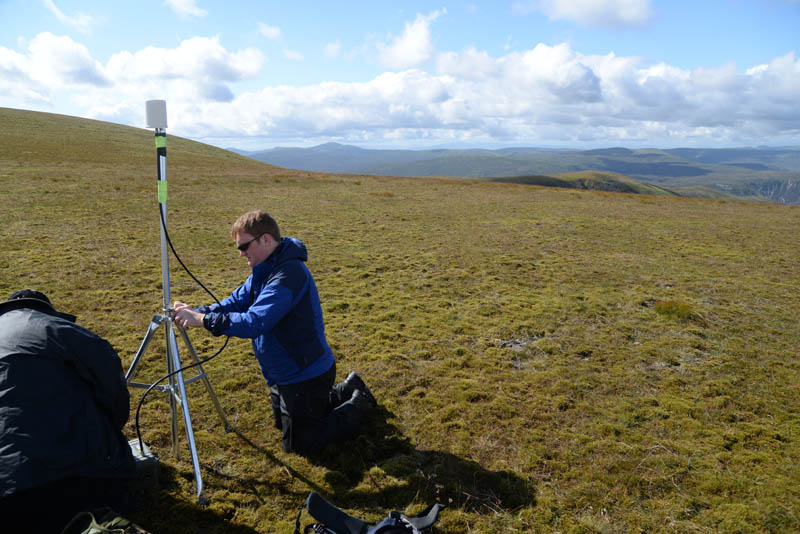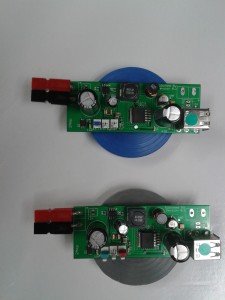Graeme and Phil set up “router 2” which provides a “hopping” internet link across a 1km stretch to let us cover the peatland on the plateau
Long distance 6LowPAN test completed!
 Today we managed to carry out a long distance 6LowPAN network link: from the valley, 3km up to the mountain and then on to another node 1km further away (router2). This is confirmation that Graeme’s CC1120 Contiki driver works very well and we can start to deploy the sensor nodes around the mountain.
Today we managed to carry out a long distance 6LowPAN network link: from the valley, 3km up to the mountain and then on to another node 1km further away (router2). This is confirmation that Graeme’s CC1120 Contiki driver works very well and we can start to deploy the sensor nodes around the mountain.
Range tests on Mountain
PCBs undergoing testing
3D printed parts
For this project we are creating custom 3D printed parts for the sensors. The two parts we are creating are housings for pressure sensors. One is to be submerged in a river, the other is to measure atmospheric pressure.

This is how the parts appear when first removed from the printer. There support material to make sure the parts don’t fall over or droop during printing
Main node PCB ready for testing
First custom designed sensor
This project has required the design and development of several custom sensors. This is the first one to have been built. It uses 5 one-wire temperature sensors attached to an AVR. The AVR then runs code to interface with the sensors. In order to connect to the main sensor node the AVR uses RS-485. This means that it can be away from the main node, and because of the multi-drop nature of RS-485 multiple such devices could be attached. The other sensor nodes also interface using RS-485 so each node could have different types of remote sensor attached.
Testing the radio links in the Cairngorms
CC1120 Contiki port
First PCBs
The first batch of PCBs to be used in the project have been created. These boards will take a 12V input and give a 5V 2A output. These will be useful for powering devices in the first tests that are carried out. There are a few more boards on the way including 5V 250mA boards, which will also be used for testing and powering external peripherals.









